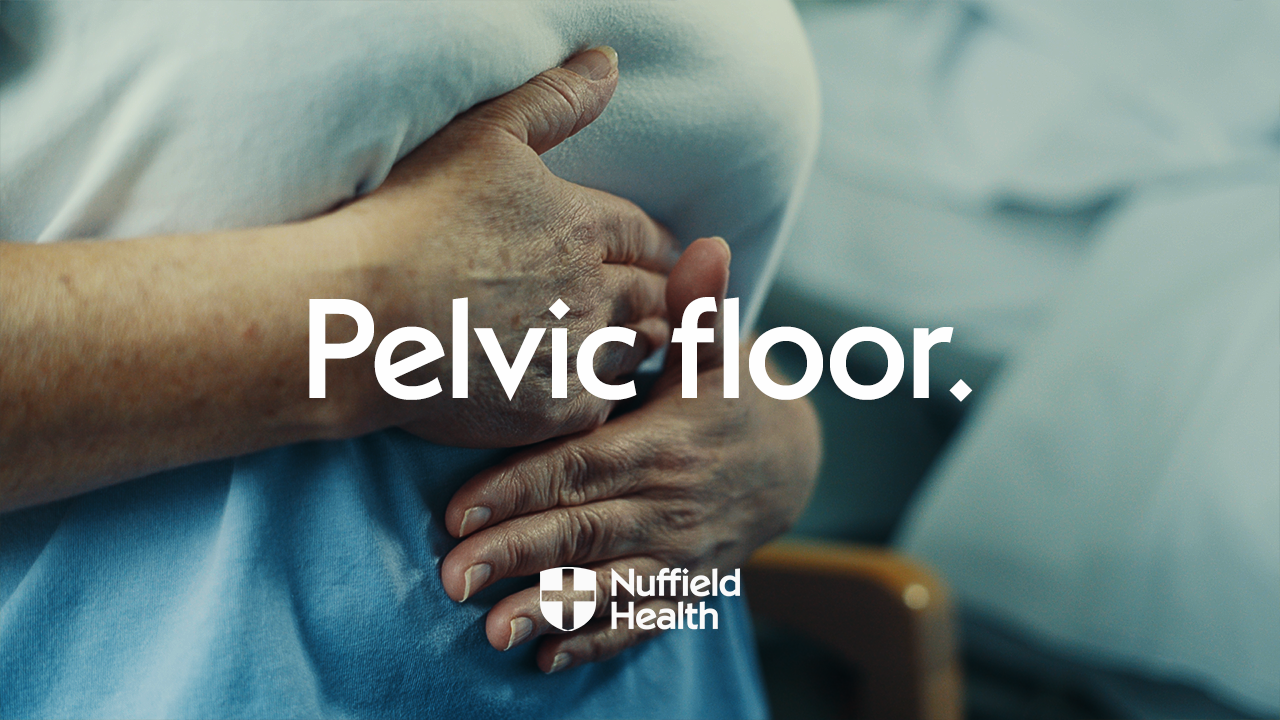Imagine this: you’re at the grocery store, laughing with a friend, and suddenly, you feel a rush of urgency. You race to the restroom, but it’s too late. You’ve had an embarrassing accident. This scenario, unfortunately, is a reality for many people who struggle with bowel incontinence. It’s a condition that can be incredibly isolating and impact daily life. But what if I told you there might be a simple, natural solution? Enter pelvic floor exercises, a powerful tool often overlooked but capable of strengthening the muscles that control bowel function.

Image: www.nuffieldhealth.com
Bowel incontinence is the involuntary loss of bowel control, leading to leakage of stool. It’s a common problem, affecting millions of people worldwide. While it can be caused by various factors, such as aging, childbirth, or certain medical conditions, the good news is that a combination of lifestyle changes, medical interventions, and exercises can often help manage symptoms and improve quality of life. But can pelvic floor exercises truly make a difference? Read on to discover the science behind this powerful approach and how it might empower you to regain control and live with confidence.
Understanding the Pelvic Floor and Its Role in Bowel Control
Imagine a hammock-like group of muscles at the base of your pelvis. These are your pelvic floor muscles, and they play a crucial role in supporting your bladder, uterus, and rectum. Essentially, they act like a slingshot, keeping everything in place and facilitating proper bladder and bowel function. When these muscles are weakened, they might not provide sufficient support, leading to incontinence issues.
Weakening of the pelvic floor can occur due to various reasons:
- Aging: As we age, these muscles naturally lose some of their strength and elasticity.
- Childbirth: The pressure exerted on the pelvic floor during pregnancy and delivery can lead to muscle stretching and weakening.
- Obesity: Excess weight puts additional strain on the pelvic floor.
- Chronic constipation: Straining during bowel movements can weaken the pelvic floor muscles.
- Certain medical conditions: Conditions like multiple sclerosis, Parkinson’s disease, or stroke can impact nerve function affecting pelvic floor control.
The Power of Pelvic Floor Exercises for Bowel Incontinence
Pelvic floor exercises, also known as Kegels, are designed to strengthen and tone these crucial muscles. Just like working out other muscle groups, regular pelvic floor exercise can improve their strength, endurance, and ability to function optimally. By strengthening these muscles, you can better control your bowel movements and potentially reduce the frequency of accidents.
Types of Pelvic Floor Exercises
There are various approaches to targeting your pelvic floor muscles, each with its own benefits. Let’s explore some common techniques:

Image: cartoondealer.com
1. Basic Kegel:
This is the most common and straightforward exercise. Imagine you’re trying to stop the flow of urine midstream or holding back gas. This is the sensation you should aim for with Kegels. Here’s how to do it:
- Identify the muscle: Sit or lie in a comfortable position with your legs slightly apart. Focus on the muscles you use to control your bladder.
- Contract the muscle: Tighten the pelvic floor muscles as if you’re trying to lift them upwards. Hold this contraction for 5-10 seconds.
- Relax the muscle: Slowly release the tension.
- Repeat: Aim for 10-15 repetitions several times a day.
2. Fast Kegels:
This variation involves quick, forceful contractions of the pelvic floor muscles.
- Contract: Tighten the pelvic floor muscles quickly, hold for a few seconds, and release.
- Repeat: Aim for 10-15 repetitions several times a day.
3. Long Hold Kegels:
Engage your pelvic floor muscles for a longer duration.
- Contract: Tighten the pelvic floor muscles and hold for 10-15 seconds.
- Relax: Release the tension.
- Repeat: Aim for 5-10 repetitions several times a day.
4. Breathe and Engage:
This technique integrates breathing with pelvic floor activation.
- Inhale: Take a deep breath, engaging the pelvic floor muscles as you inhale.
- Exhale: Gently relax and release on exhale.
- Repeat: Aim for 5-10 repetitions several times a day.
Tips for Getting the Most Out of Pelvic Floor Exercises
To see optimal results, consistency is key. And as with any form of exercise, proper form and technique are crucial. Here are some tips to maximize the effectiveness of your pelvic floor routine:
- Empty your bladder: Make sure you’ve emptied your bladder before starting the exercises, as a full bladder can make it more challenging to isolate the pelvic floor muscles.
- Focus on proper contraction: Pay attention to the targeted sensation. Ensure you are contracting the correct muscles and not squeezing your buttocks, thighs, or stomach.
- Regularity is key: Aim for at least 3 sessions of 10-15 repetitions each day.
- Breathe deeply: Avoid holding your breath, as this can strain your body.
- Don’t strain: If you experience any pain, stop and consult your doctor before continuing.
- Seek guidance: If you’re unsure about proper form, consult a pelvic floor specialist or a qualified healthcare professional for personalized instruction.
Beyond Exercise: Lifestyle Modifications
While pelvic floor exercises play a significant role in managing bowel incontinence, lifestyle changes can also contribute to improved bowel control. Here are a few recommendations:
- Diet: Ensure a fiber-rich diet to prevent constipation and promote healthy bowel movements. Incorporate plenty of fruits, vegetables, whole grains, and legumes.
- Weight management: If you are overweight or obese, losing even a small amount of weight can reduce the strain on your pelvic floor.
- Regular bowel habits: Try to establish a routine for bowel movements, going at the same time each day to help regulate your system.
- Avoid straining: When you have to go, don’t strain. If you experience difficulty passing stool, talk to your doctor about possible treatments.
- Avoid smoking: Smoking can contribute to weakening of the pelvic floor muscles.
When to Seek Medical Advice
If you’re experiencing bowel incontinence, it’s important to discuss your condition with a healthcare professional. They can help determine the underlying cause and develop an appropriate treatment plan. If conservative measures like pelvic floor exercises and lifestyle changes don’t provide adequate relief, your doctor may recommend other options, such as medication, surgery, or biofeedback therapy.
Can Pelvic Floor Exercises Help With Bowel Incontinence
Conclusion
While the thought of bowel incontinence can be daunting, remember that you’re not alone. With the right approach, including pelvic floor exercises, lifestyle modifications, and medical interventions if necessary, you can effectively manage your condition and regain control. By strengthening your pelvic floor muscles, you can improve your bowel function, enhance your quality of life, and live with confidence. Don’t hesitate to reach out to a healthcare professional for personalized advice and support on your journey to finding relief!






